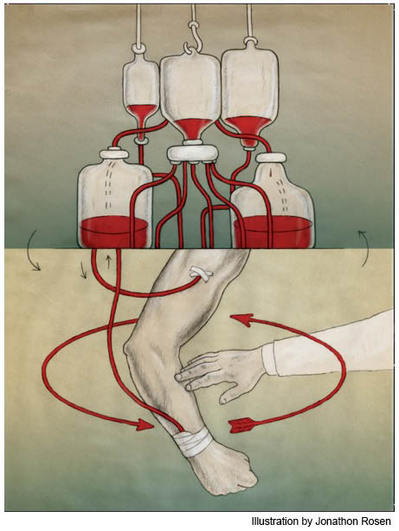Against the Flow: What’s Behind the Decline in Blood Transfusions?
By Sarah C.P. Williams, Staff Writer for the department of Communications & Public Affairs at the Stanford School of Medicine
One day in 2011, an ambulance pulled up to the Stanford emergency room and paramedics unloaded a man in his 30s who had crashed his motorcycle. He was in critical condition: Tests showed dangerously low blood pressure, indicating that around 40 percent of his blood was lost. And an ultrasound revealed that the blood was collecting in his belly, suggesting that one or more of his abdominal organs was the source of the blood loss.
Paul Maggio, MD, a trauma surgeon and co-director of critical care medicine at Stanford Hospital & Clinics, sped the patient into the operating room. But he made sure that the technicians prepping his operating room took the time to set up one key piece of equipment, called an intraoperative cell salvage device, which is now commonly used in trauma cases. As the patient lay on the operating table and Maggio made the first cuts into his abdomen, suction devices slurped up the loose blood, directing it away from the surgery site through tubes. But instead of leading to a container bound for disposal, the tubes led to the salvage device.
The ATM-sized machine spun the blood to separate its components, cleaned it of any debris that had been suctioned up from the abdomen and sent it back out into fresh bags. From there, the blood was shunted right back to the patient’s body, through intravenous tubes poking into his veins. The cell salvage device has been around for decades, but only recently has evidence emerged that autotransfusion – giving patients their own blood instead of blood from donors – leads to better surgery outcomes. As a result, the use of the machines has gone from extremely rare to commonplace. Today, hospitals that have the machines use them in many scheduled abdominal and heart surgeries and routinely in trauma cases involving massive bleeding.
Continue to the full article by clicking here.

